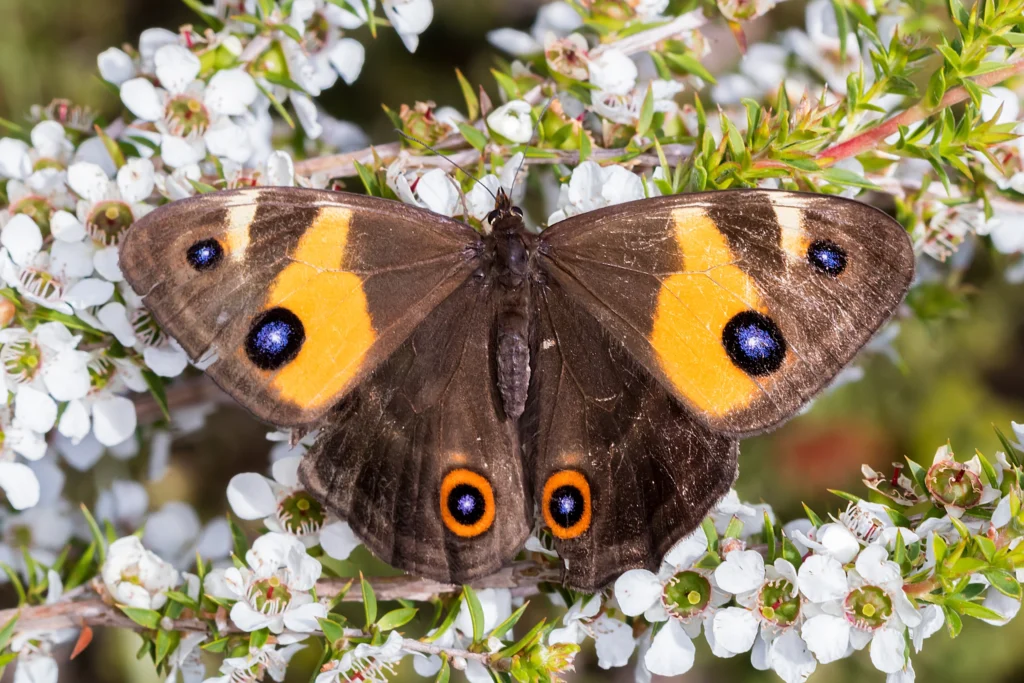“Butterflies are like living poetry, each one a unique masterpiece of nature.”
– Unknown
It belongs to the Nymphalidae family and is well-known for its unique coloration and the cultural significance it holds, particularly within Roman mythology.
Now let’s delves into the scientific classification, life cycle, and habitat of Tisiphone abeona, alongside its mythological and cultural significance.
Scientific Classification and Description
“The butterfly’s fluttering wings bring hope to the heart.”
– Unknown
Taxonomy
The Tisiphone abeona is scientifically classified within the following hierarchy:
Domain: Eukaryota
Kingdom: Animalia
Phylum: Arthropoda
Class: Insecta
Order: Lepidoptera
Family: Nymphalidae
Genus: Tisiphone
Species: Tisiphone abeona
Over time, it has been referred to by several synonyms, including Papilio abeona and Epinephele rawnsleyi.
This classification places the Tisiphone abeona within the varied group of butterflies known for their lively colored wings and complex life cycles. As a member of the Nymphalidae family, the Swordgrass Brown is closely related to other well-known butterflies, including the Monarch and the Painted Lady.
Physical Characteristics
The Tisiphone abeona is characterized by its medium-sized wingspan, normally ranging from 60 to 70 millimeters. The forewings are mainly brown with striking eyespots, which serve as a defense mechanism against predators. The hind wings are similarly colored but feature a duller pattern. The underside of the wings is paler, providing effective camouflage when the butterfly is at rest. These visual traits not only aid in survival but also contribute to the butterfly’s appeal to collectors and nature lovers.
Habitat and Distribution
Endemic to Australia, the Tisiphone abeona is mostly found along the eastern coastal regions. Its range extends from New South Wales through Victoria and into parts of Queensland. Specific locales such as the Hunter River, Camden Haven, Port Stevens, Port Macquarie, Dorrigo Plateau, and Barrington Tops are known habitats. These areas provide the moist, forested environments that are ideal for the butterfly’s to live, particularly where swordgrass (Gahnia species), its primary food plant, is abundant.
The larvae feed solely on swordgrass, making the availability of this plant fundamental to the species life cycle.
Life Cycle
The life cycle of the Tisiphone abeona, like other butterflies, the eggs are usually laid on the leaves of swordgrass, where they remain until hatching. The caterpillars, which emerge from the eggs, are green and feature small spikes that help them blend into their surroundings. During the larval stage, the caterpillars feed on swordgrass, growing rapidly before entering the pupal stage.
The pupa, or chrysalis, is where the transformation into the adult butterfly occurs. This stage lasts for several weeks, after which the adult butterfly emerges, ready to begin the cycle anew.
Mythological and Cultural Connections
“Butterflies are the embodiment of lightness and joy, their wings brushing the world with color and grace.”
– Unknown
The Roman Goddess Abeona
The Tisiphone abeona is named after Abeona, a Roman goddess linked with the protection of travelers, mainly children as they left home for the first time. Abeona was believed to safeguard those setting out on a journeys, ensuring their safe passage to new places. The connection between this butterfly and the goddess reflects the butterfly’s symbolic role as a guardian or protector, watching over those who travel or embark on new beginnings.
Abeona is often mentioned alongside other goddesses such as Adiona, who is associated with safe returns, and Juno, the queen of the gods. Together, these deities represent the many parts of human journeys—both physical and metaphorical. The butterfly, with its changing life cycle, mirrors the idea of journey and change, making the Tisiphone abeona a fitting namesake for the goddess of safe travels.
Symbolism and Folklore
Beyond its mythological namesake, the Tisiphone abeona holds a place in many cultural traditions and beliefs. In many cultures, butterflies are seen as symbols of transformation, rebirth, and the soul. The Tisiphone abeona, In particular, the butterfly is time and again viewed as a protector spirit, offering guidance and protection to those it visits.
The presence of a butterfly at one’s door, for instance, is considered a sign of good fortune or a message from a loved one who has passed away. These beliefs highlight the deep connection between butterflies and the human experience.
Modern Interpretations
In modern culture, butterflies continue to be powerful symbols, used in art, literature, and personal expression. The Tisiphone abeona, with its prominent appearance, is no exception. It has inspired many interpretations, from tattoos to symbolic references in songs and poetry.
Tattoos featuring butterflies are common, representing personal transformation, freedom, or a new beginning. The Tisiphone abeona’s connection to the goddess Abeona adds another layer of meaning, symbolizing protection and safe journeys.
Conservation and Study
“Every butterfly is a rebirth, a symbol of hope and new beginnings.”
– Unknown
Conservation Efforts
The Tisiphone abeona, while not currently listed as endangered, faces threats from habitat loss due to urbanization and agriculture. The preservation of its natural habitats, mainly the coastal strips where swordgrass is abundant, is fundamental for its survival.
Non-profit organizations and research institutions, such as the Australian Museum, play a vital role in these preservation efforts. By studying the butterfly’s life cycle, habitat needs, and population dynamics, these organizations contribute to the protection of these and other widespread species.
Notable Photographers and Their Contributions
Documenting the Tisiphone abeona in its natural habitat has been the work of quite a few famous photographers. Helen Schwencke, R.P. Field, Anthea Flemming, and Gary Brooks are among those who have captured stunning images of this butterfly, bringing attention to its beauty and the need for its preservation.
Their work not only supports scientific research but also helps to employ the public in preservation efforts by showcasing the butterfly’s elegance and ecological significance.
The Role of Education and Awareness
Educational programs and public outreach initiatives can help people understand the importance of preserving natural habitats and the species that depend on them. By learning about the butterfly’s life cycle and habitat needs, individuals can contribute to conservation efforts through responsible environmental practices and support for preservation initiatives.
Tisiphone Abeona in Popular Culture
“Butterflies are the universe’s way of showing us that transformation is possible.”
– Unknown
Appearances in Art and Media
The Tisiphone abeona, like other butterflies, has encouraged a selection of artistic expressions. Its presence in art and media often symbolizes transformation, beauty, and the fleeting nature of life. Songs such as “Shelter” use butterfly imagery to convey concepts of protection and vulnerability, resonating with the butterfly’s mythological associations.
In literature, the butterfly is frequently used as a metaphor for change and renewal, a symbol of growth and transformation. Its appearances in poetry, visual art, and even fashion reflect the charming appeal of this graceful insect.
Butterfly Symbolism in Social Media and Urban Culture
In modern slang and social media, butterflies continue to be popular symbols. The Tisiphone abeona, with its cultural and mythological connections, is often referenced in discussions about personal growth, change, and spiritual journeys. Platforms like Urban Dictionary have entries on butterfly meanings, reflecting the widespread use of these symbols in contemporary language.
Conclusion
“Butterflies are like dreams; they take flight and bring color to our lives.”
– Unknown
The Tisiphone abeona is more than just a butterfly; it is a symbol of transformation, protection, and the delicate balance of nature. Endemic to Australia, this species exemplifies the beauty and complexity of the natural world, while also carrying rich cultural and mythological significance. As we continue to study and protect the Tisiphone abeona, we not only preserve a unique species but also maintain a vital connection to the stories and symbols that have shaped human understanding of nature and life.
Conservation efforts, driven by education and awareness, are crucial to ensuring that the Tisiphone abeona and other species continue to thrive. By recognizing the importance of this butterfly and its habitat, we can contribute to the preservation of biodiversity and the protection of the natural world for future generations.

